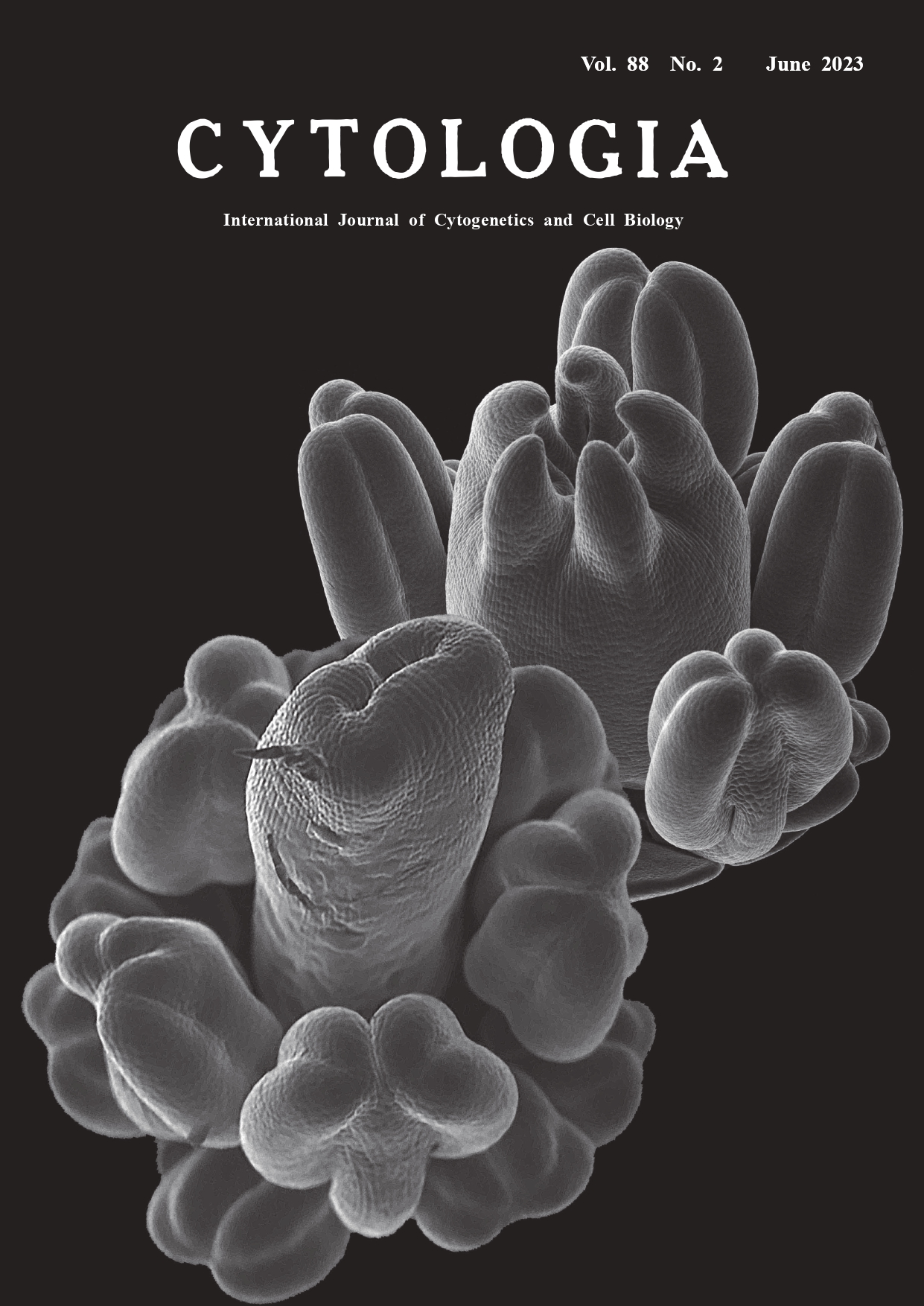| ON THE COVER |  |
||
|---|---|---|---|
| Vol. 88 No.2 June 2023 | |||
| Technical Note | |||
|
|
|||
Treatment of Silene latifolia Flower Buds with Peptides Containing Gynoecium-Suppressing Functions Taiki Kobayashi1*, Moe Kitoh1, Shigeyuki Kawano3 and Yusuke Kazama1,2* 1Department of Bioscience and Biotechnology, Fukui Prefectural University, 4–1–1 Kenjojima, Matsuoka, Eiheiji-Cho, Fukui 910–1195, Japan 2 Nishina Center for Accelerator-Based Science, RIKEN, 2–1 Hirosawa, Wako, Saitama 351–0198, Japan 3 Graduate School of Frontier Sciences, The University of Tokyo, 178–4–4 Wakashiba, Kashiwa, Chiba 277–0871, Japan
The dioecious plant Silene latifolia (Caryophyllaceae) has heteromorphic X and Y sex chromosomes (Aonuma et al., 2021, Kobayashi et al., 2021). The Y chromosome is known to possess two sex-determining functions: a gynoecium-suppressing function (GSF) and a stamen-promoting function (SPF). However, identification of specific sex-determining genes has proven difficult because the majority of the Y chromosome (about 570 Mbp) exhibits suppressed recombination in the sex-determining regions (Kazama et al. 2016). By performing genome sequencing and RNA sequencing of hermaphroditic mutants of S. latifolia, with small deletions in the GSF region, we identified a sex-determining gene, GSFY (Kazama et al. 2022). GSFY is homologous to the CLAVATA3 gene (CLV3) in Arabidopsis thaliana. CLV3 is a small peptide that regulates the size of shoot apical meristems and pistils. Given the similarity to CLV3, to test whether GSFY influences sex determination by suppressing gynoecium development, we produced a synthetic GSFY-peptide and applied it to flower buds. The cover images are photographs of GSFY-peptide treated (in the front) and untreated (in the back) flower buds of hermaphrodite mutants of S. latifolia. The photographs have been captured using scanning electron microscopy (SEM). Five carpels are observed in both hermaphroditic flowers and female flowers. In contrast, the GSFY-peptide treated flower bud had only two carpels and a smaller gynoecium due to the inhibition of carpel development. For this treatment, we used the hermaphroditic mutant [early-stage gynoecium promoted mutant (EGP14) (Kazama et al. 2016)], which was produced by treating inbred K-line with heavy-ion irradiation. Plants were grown in pots in a growth chamber at 23°C in a 16 h light/8 h dark cycle. Similar to the CLV3-peptide treatment, the GSFY-peptide solution was synthesized by replacing two proline residues with hydroxyproline synthesized peptides were dissolved in a phosphate buffer (pH= 7.5) to prepare a 5 mM GSFY-peptide stock, which was diluted beforehand in sterile water to prepare a 5 μM solution. Flower buds larger than 1 mm in diameter were removed with tweezers, whilst flower buds smaller than 1 mm were dipped in 500 μL of peptide solution for 4 h at room temperature. Subsequently, any remaining peptide solution was poured onto the treated flower buds. The treated plants were then cultivated in the growth chamber at 23°C by using a 16 h light/8 h dark cycle for 2 weeks. The treated flower buds were dissected under light microscopy and photographed using SEM at -20°C (S-3000N or SU1000, Hitachi, Tokyo, Japan).
Aonuma, W., Kawamoto, H., Kazama, Y., Ishii, K., Abe, T. and Kawano, S. 2021. Male/female trade-off in hermaphroditic Y-chromosome deletion mutants of the dioecious plant Silene latifolia. Cytologia 86: 329–338. Kazama, Y., Ishii, K., Aonuma, W., Ikeda, T., Kawamoto, H., Koizumi, A., Filatov, D. A., Chibalina, M., Bergero, R., Charlesworth, D., Abe, T. and Kawano, S. 2016. A new physical mapping approach refines the sex-determining gene positions on the Silene latifolia Y-chromosome. Sci Rep. 6: 18917. Kazama, Y., Kitoh, M., Kobayashi, T., Ishii, K., Krasovec, M., Yasui, Y., Abe, T., Kawano, S. and Filatov, D. A. 2022. A CLAVATA3- like gene acts as a gynoecium suppression function in white campion. Mol. Biol. Evol. 39: msac195. Kobayashi, T., Takahashi, M., Nishijima, R., Sugiyama, R., Ishii, K., Kawano, S. and Kazama, Y. 2021. Effective chromosomal preparation protocol for the dioecious plant Silene latifolia. Cytologia 86: 323–328. * Corresponding author, e-mail:ykaze@fpu.ac.jp DOI: 10.1508/cytologia.88.89 |
|||